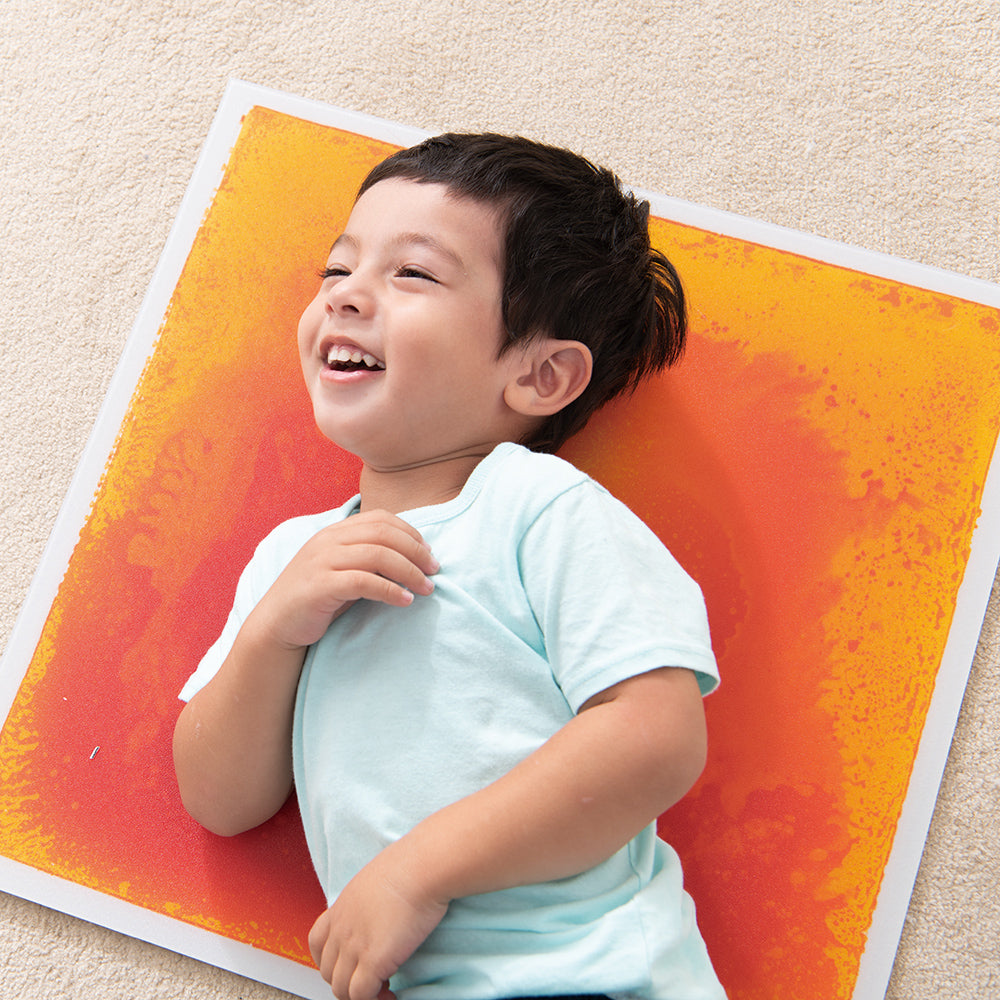May 06 , 2023
Sensory Balls Activities to Calm Your Child
What exactly is a Sensory Ball?
Sensory balls are excellent ways to provide tactile and sensory stimulation to children (and adults)! They come in a variety of forms, sizes, and materials and can be quite beneficial to anyone in need of extra stimulation, aid calming down or focusing, or a little sensory processing assistance. They're also a lot of fun! Adults can keep them at their desks or in their bags in case they need a little boost of relaxation or attention throughout the day.
Sensory toys are popular in schools and daycares, and they are frequently utilized and suggested for play by specialists and doctors. They are as entertaining as they are developmental, and they are ideal for incorporating into household activities.
How Do Sensory Balls Help Children Relax?
When people are adequately stimulated, they learn and retain the most knowledge. This is because, similar to how exercise grows your muscles, stimulation strengthens your brain.
Overstimulation, on the other hand, can sometimes have the opposite effect, causing children to lose attention and become angry and agitated.
Sensory balls are quite effective at calming overstimulated children. They can assist them by doing the following:
refocus
expel energy
feel calm and grounded
reduce stress and anxiety
be present
At some point, everyone feels overstimulated. If you suspect your kid has a sensory processing disorder, consult with your pediatrician or a child development expert.
How to Determine If Your Child Is Being Overstimulated
Overstimulated children may become overwhelmed, worried, irritated, or have difficulty focusing. It is critical to recognize the symptoms of overstimulation and take actions to calm and soothe them.
Signs could include:
1.Excessive sensitivity to loud noises, strong odors, or brilliant lighting
2.Uncontrollable sobbing when they feel, see, hear, or taste something they loathe.
3.Anxiety before attending group meetings
4. Crowd discomfort or avoidance
Overstimulated children may exhibit a variety of mental, physical, or emotional difficulties. These could include:
1. Exhaustion on a physical level. Adrenaline and cortisol levels in the body (hormones released when the body is overstimulated) can cause fatigue in children.
2. Headaches or palpitations of the heart. Anxiety, which is frequent among overstimulated persons, can result in both physical and mental symptoms such as headaches, heart palpitations, and panic attacks.
3. Paying attention is difficult. Cognitive overload occurs when your brain is overburdened, making it difficult to pay attention at home or in the classroom.
4. Making decisions is difficult. Another indicator of cognitive stress is difficulty making decisions.
5.Trouble sleeping. Overstimulation can disrupt sleep habits and make it difficult for your child to fall or remain asleep.
If you observe any of these symptoms in your child, there are healthcare specialists and child development experts that can assist you both.
What Activities Can I Do With My Child to Relax Using a Sensory Ball?
Sensory balls are simple, non-disruptive, and inexpensive methods to help your youngster who is overstimulated.
Here are ten different ways to use a sensory ball.
1. Gently roll the ball over their arms or legs. The ball's pressure and texture can be calming.
2. Allow them to squeeze the ball. This can assist them in releasing stress and feeling more calm.
3.Allow them to roll the ball in their hands. This gives them a relaxing sense and makes them feel more grounded. It also works to roll them along their arms and legs.
4.Allow your youngster to softly bounce the ball on the ground. Bouncing's rhythmic action can be soothing.
5.Throw the ball up against a wall. This can be a pleasant and stimulating way to let go of stress or energy.
6.Make a catch. This can help them focus their attention and energy, and it's a great opportunity for them to interact with their friends or you!
7.Massage. Apply slight pressure on their back, shoulders, or feet with the sensory ball. This can be both soothing and grounding.
8. Use it to stimulate their senses. Inquire about how the ball looks, smells, and feels. Simple mindfulness activities assist youngsters in becoming more present and grounded in the present moment.
9.Make noise! Make some soothing sounds with the ball for your child, or encourage them to do so. Music can be an effective strategy for encouraging relaxation and stress reduction.
10.Play. Play with the ball as part of another soothing activity, such as kinetic sand or water beads. These activities can assist to divert and soothe a stressed-out toddler.
These exercises can benefit both you and your children. When introducing a sensory ball, remember to be patient and open, and be prepared to alter your activities until you find what works for your child.
The Verdict on Sensory Balls for Overstimulation
Sensory balls are not simply a fun and interesting method for your youngster to play. They can also aid children who are overstimulated.
You can purchase a variety of sensory balls based on what is causing your child to be overstimulated. They can also be utilized to help with other developmental difficulties, such as children who require extra stimulation. Edushape collaborates closely with child development professionals and parents to develop toys that promote development and play.
If you believe your kid is overstimulated, consult with a healthcare expert to see if further support is necessary.

